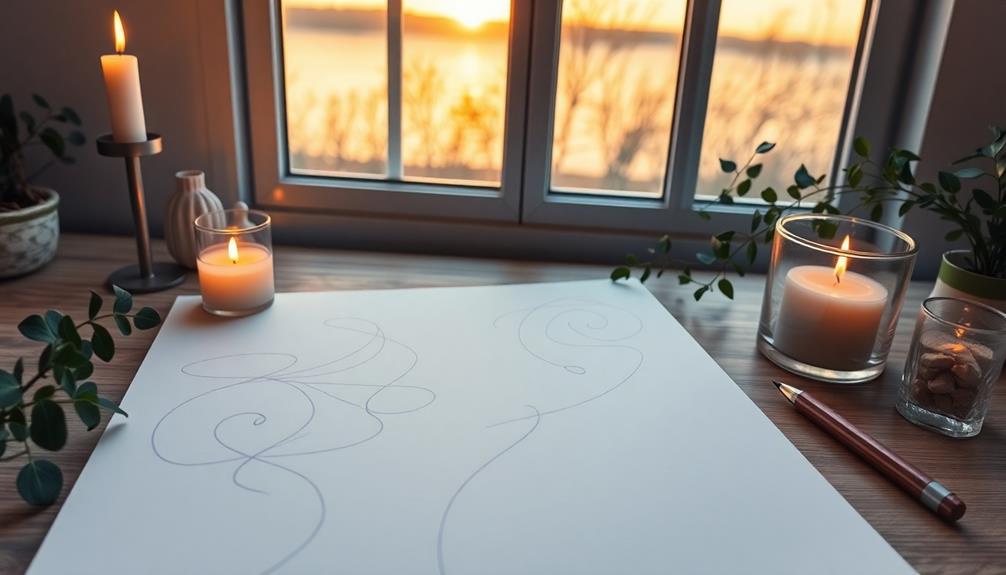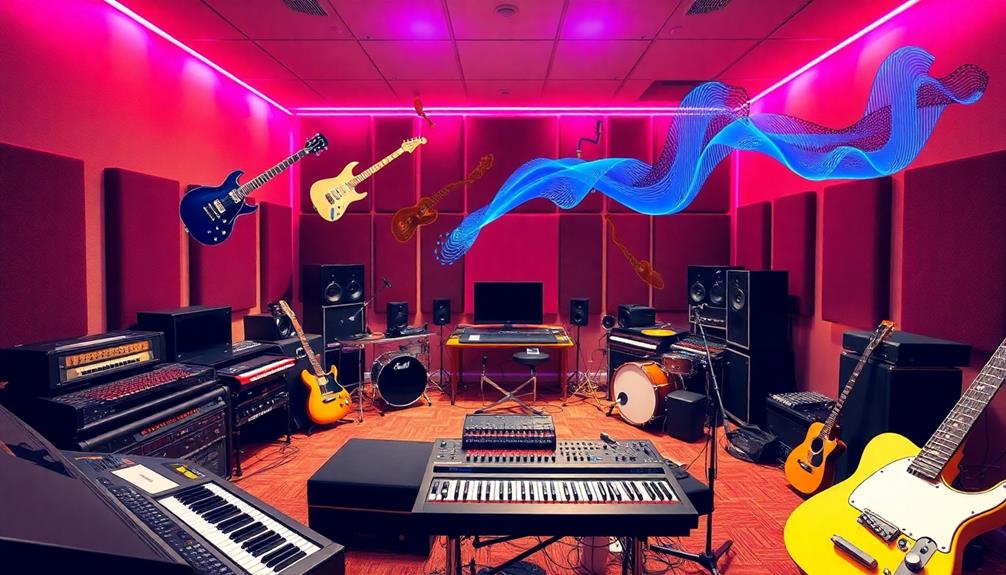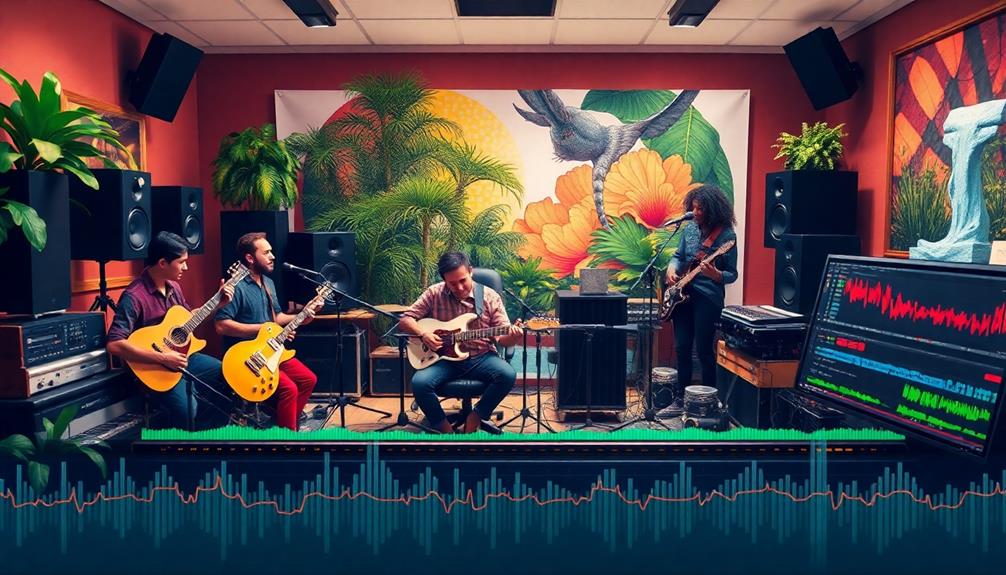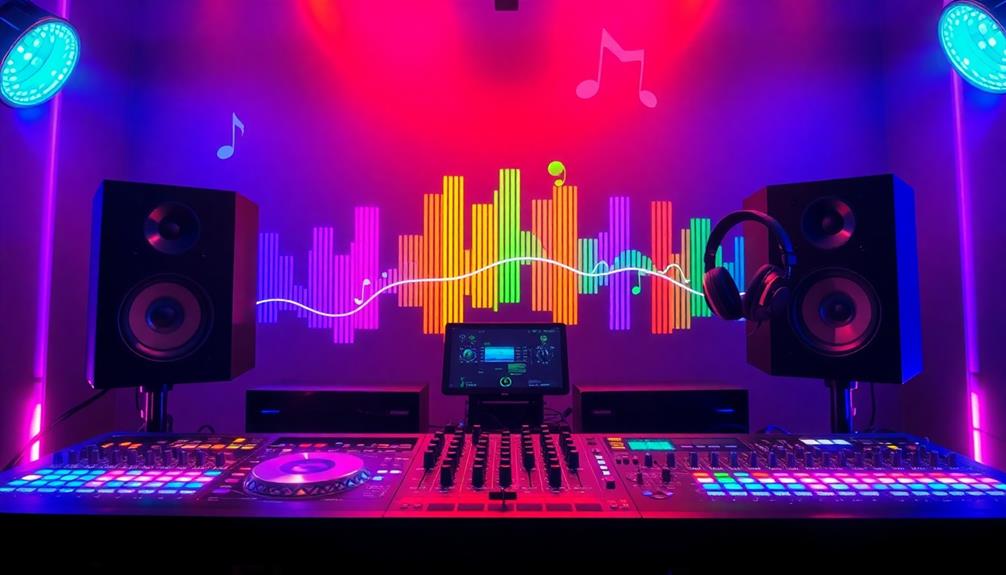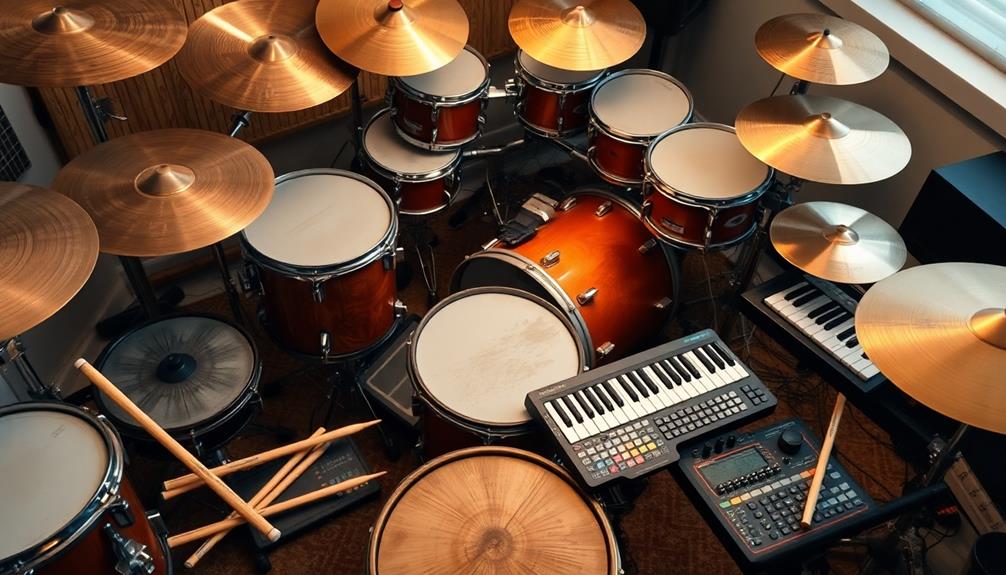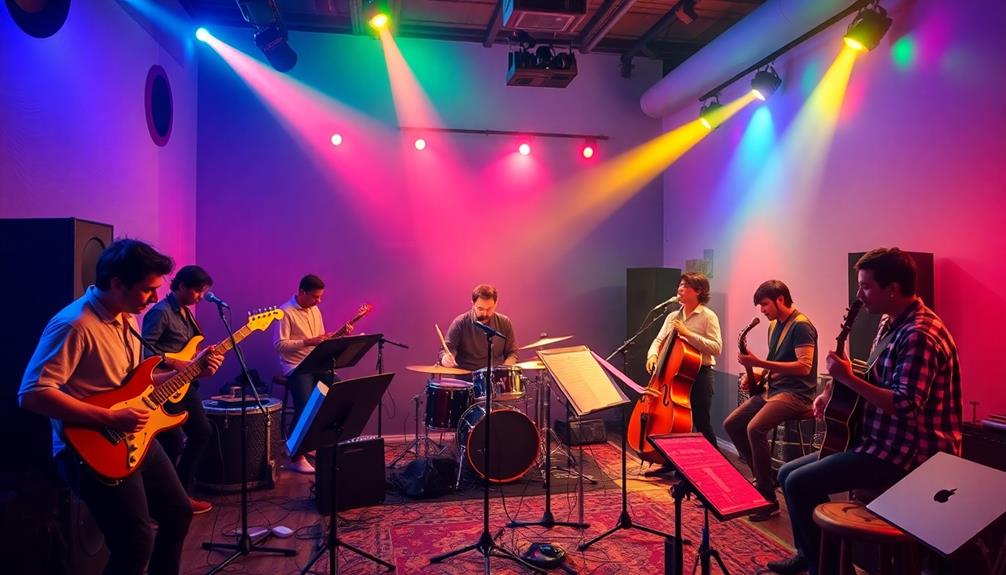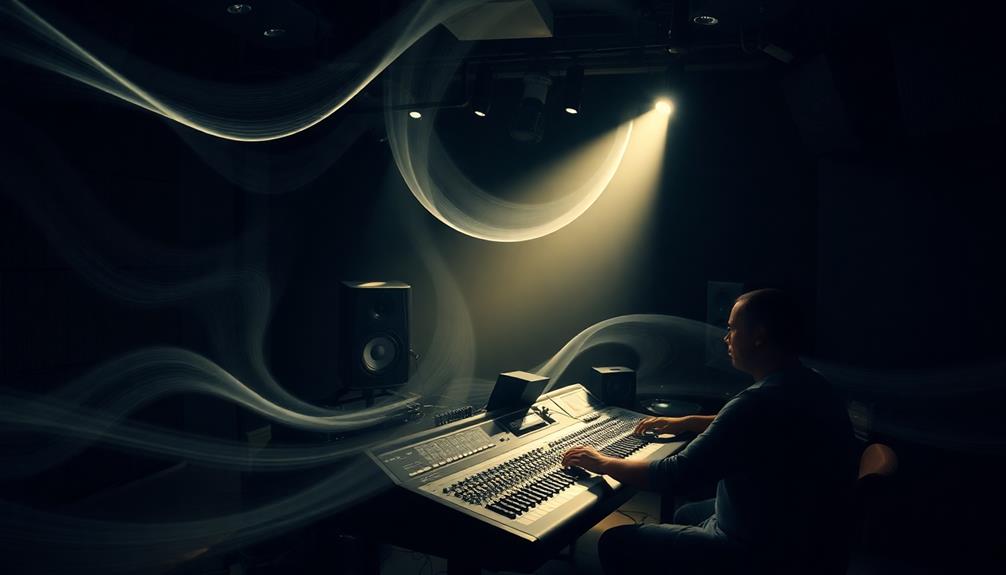Designing pads that evoke emotion is all about creating soundscapes that resonate with listeners. Start by using slow attack settings for smoother sound shifts, and incorporate modulations like LFOs for dynamic movement. Layering different pads can enhance richness, while careful chord choices—major for happiness, minor for reflection—set the emotional tone. Heavy reverb amplifies presence and immerses your audience. Don't forget to experiment with EQ and effects to shape your sound further. By mastering these techniques, you can craft pads that captivate and engage. You'll find more strategies to elevate your emotional sound design as you explore further.
Key Takeaways
- Utilize slow attack settings to create smooth sound transitions that evoke a gradual emotional build-up.
- Layer synthesized pads with real instrument samples to enrich textures and enhance emotional depth.
- Choose chord progressions thoughtfully; major chords evoke happiness while minor chords inspire contemplation.
- Apply heavy reverb to amplify atmospheric qualities and immerse listeners in emotional experiences.
- Incorporate modulation techniques like LFOs to add dynamic movement and enhance listener engagement.
The Importance of Emotional Sound Design

Emotional sound design plays an essential role in how listeners connect with music, with studies showing that it greatly boosts engagement and satisfaction. When you focus on the emotional impact of your sound choices, you create an environment where listeners can genuinely resonate with your music. This connection often triggers memories and feelings, enhancing the overall emotional experience.
Techniques like slow attack on amp envelopes, heavy reverb, and organic sound sources can be compared to how different tea blends, such as perfecting Earl Grey tea, evoke distinct flavors and emotions. By utilizing these sound design methods, you can develop pads that evoke warmth and intimacy. Layering multiple pads with sustained notes and varied chord structures allows for complex emotional responses, resulting in a richer, more immersive soundscape.
The careful selection of synths and sound sources is essential. When you apply modulation techniques effectively, you craft unique emotional signatures that deeply connect with your audience.
Techniques for Crafting Emotional Pads

Crafting emotional pads requires a thoughtful approach to sound design that prioritizes depth and resonance. To evoke an emotional reaction, consider using slow attack settings on amp envelopes. This creates smoother sounds that gradually build, enhancing the emotional depth in your pads. Additionally, incorporating modulation techniques, like LFOs for pitch drift, can add dynamic movement, making your pads more engaging and enriching emotional experiences.
Experimenting with layering multiple synthesized sounds and real instrument samples can create richer textures, amplifying their emotional impact. You can further shape the sonic space by applying effects like heavy reverb and EQ, which cut unwanted frequencies and enhance presence. Finally, use sustained notes and varying decay times to invoke contemplation and space, eliciting deeper emotional responses.
Here's a handy reference to guide your sound design:
| Technique | Emotional Impact |
|---|---|
| Slow Attack Envelopes | Gradual build, deeper resonance |
| Modulation (LFOs) | Dynamic movement, engaging sound |
| Layering & Effects | Rich textures, amplified emotion |
Layering and Chord Structures

Often, musicians find that layering different pads with varying textures and frequencies creates a fuller, richer sound experience. This technique not only enhances the emotional depth of your music but also allows each element to shine through.
When you layer sustained notes and harmonies, you can craft a sense of space and contemplation, inviting listeners to immerse themselves in the emotional landscape you've created.
Incorporating chord structures is essential in this process. Using major chords can evoke happiness, while minor chords often convey sadness. By strategically arranging these chords, you guide your audience through an engaging musical journey filled with tension and resolution.
Building tension through thoughtful chord progressions and resolving it effectively can elevate your storytelling, making the emotional experience more impactful.
Remember to reflect on how your pads complement other instruments. This synergy enhances the overall emotional impact and reinforces thematic motifs present in your composition.
Ultimately, the way you layer pads and structure your chords can transform your music, allowing you to connect deeply with your listeners and evoke powerful emotions.
Effects and Processing for Emotion
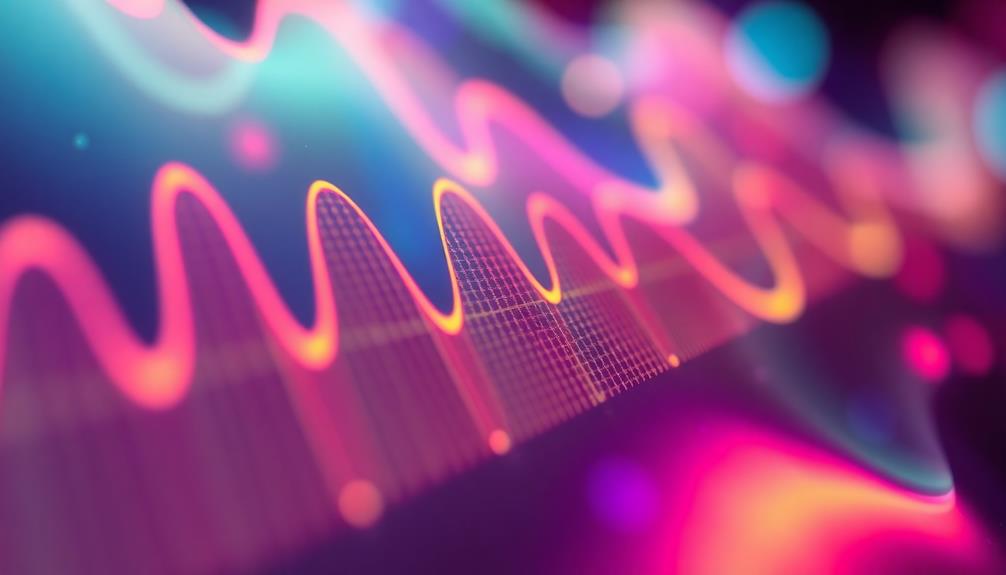
Enhancing the emotional impact of pad sounds involves strategically applying effects and processing techniques. To evoke specific feelings, consider using heavy reverb. This effect amplifies emotional sensations, creating an immersive sound experience that greatly enhances listener engagement.
You might also experiment with sidechain compression; this technique introduces a rhythmic feel, designed to promote feelings of movement and energy, enriching the emotional dynamics of your track.
EQ is another essential factor influencing the emotional character of your pads. By removing unwanted frequencies, you clarify the sound and guarantee it complements the overall mix effectively.
In addition, adjusting envelope settings, particularly decay times, allows you to vary the sustain and release of your pad sounds. This manipulation can remarkably influence the emotional intensity and richness of the texture.
Lastly, incorporating effects like tremolo can add dynamic movement to your pads, making them feel more alive and engaging. This liveliness can elicit stronger emotional responses from listeners, reinforcing the intended atmosphere of your music.
Engaging Listeners Through Emotion
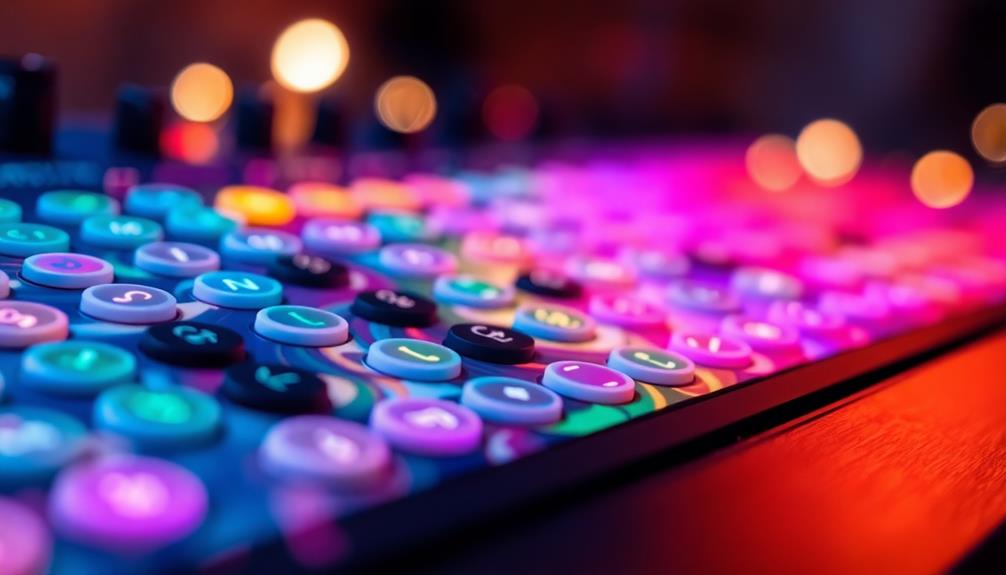
Through the careful layering of sounds, you can create emotionally engaging pads that resonate deeply with listeners. By combining synthesized textures with real instrument samples, your pads can evoke a richer auditory experience. The choice of chords plays a significant role; major chords often convey happiness, while minor chords can instill contemplation or sadness.
Incorporating modulation techniques, like LFOs for pitch drift, adds dynamic movement, making your pads more immersive. Heavy reverb effects amplify emotional sensations, enhancing atmospheric qualities and drawing the listener into an expansive soundscape.
Here's a quick overview of essential sound design elements that influence emotional responses:
| Sound Design Element | Emotional Impact |
|---|---|
| Major Chords | Happiness or Joy |
| Minor Chords | Sadness or Contemplation |
| Modulation Techniques | Dynamic Movement |
| Heavy Reverb | Sense of Space |
| Tempo & Dynamics | Shapes Emotional Journey |
Understanding these sound design elements allows you to craft pads that not only engage listeners but also guide them through an emotional journey, creating a profound connection with your music.
Frequently Asked Questions
What Is a Design That Evokes Emotion?
A design that evokes emotion combines visual elements, colors, and textures to create an immersive experience. You'll feel drawn in, connecting personally with the piece, as it resonates with your memories and emotions.
What Is the Pad Model of Emotion?
Did you know that 65% of people say music can evoke strong emotions? The Pad Model of Emotion categorizes these feelings based on sound pads, emphasizing chord structures and harmonies to create an emotional connection with listeners.
Which Element of Design Has the Purpose of Generating Emotions?
In design, color choice greatly impacts emotions. Warm colors can create feelings of comfort, while cool tones may evoke calmness. You should consider how each element influences the emotional response you want to elicit from your audience.
Which of the Following Elements of Design Evoke Emotions?
You might think all design elements are neutral, but colors, shapes, and textures can evoke powerful emotions. For instance, warm colors ignite passion, while soft shapes create comfort, guiding your audience's feelings effectively.
Conclusion
As you weave your sonic tapestry, think of each pad as a character in a story, each with its own journey and emotions. Just like a painter selects colors to evoke feelings, you mix layers, chords, and effects to create an auditory landscape that resonates. When listeners encounter your work, they'll commence on a voyage through sound, feeling the highs and lows you've crafted. By mastering emotional sound design, you're not just creating music; you're telling a heartfelt tale.

